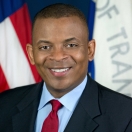
America’s capacity for creativity, innovation, and invention is the envy of the world. Over the past seven years, the Obama Administration has strengthened our foundation for innovation through investments and reforms to drive technological breakthroughs that will power the American economy and inspire the world for generations to come. Today, we’re building on that track record by finalizing new ground rules to govern the commercial use of unmanned aircraft systems, more commonly known as “drones.” These rules will open up the National Airspace System to a major new technology and create new jobs while ensuring that we protect privacy and safety.
Taking a step back, it’s no secret that technology has been rapidly changing the world, and that comes with both opportunities and challenges. But this Administration has been forward-looking, working to shape and prepare for technological breakthroughs, so we can harness technology for the benefit of all Americans. For example, we have supported research and development for next-generation technologies across an array of disciplines and applications, like healthcare, clean energy, and national security.
Today’s rule is another step forward. The final “Small Unmanned Aircraft System” rule that the Department of Transportation is releasing today is the first set of nationally uniform regulations for the commercial, educational and public use of unmanned aircraft. Unmanned aircraft will be a transformational technology and a platform for new kinds of services, helping farmers improve crop yields, giving workers tools to more safely conduct inspections of critical infrastructure, and changing how we fight fires, monitor wildlands, and respond to disasters.
The potential benefits of these breakthrough technologies are remarkable – according to one study, the expansion of commercial drones alone could add $82 billion in economic value over the next ten years and by 2025 employ an additional 100,000 Americans.
Farmers will be among the first to reap the benefits of new commercial drone activity, as many of the most important immediate applications for drones are in the agricultural sector. Drones can monitor crop health in real-time for farmers who are trying to manage farms that are hundreds or thousands of acres, increasing crop yield.
Drones will also save lives by helping workers inspect cell phone towers, pipelines, electric lines, and oil rigs. To take one example, more than 12,000 utility line workers were injured or killed last year, making it one of the 10 most dangerous jobs in America. Using drones, workers can inspect power lines and downed electric lines more safely, avoiding injury and death. Or, for example, unmanned aircraft can be used to inspect the 300,000 communications towers in the U.S., thereby avoiding the serious injuries and deaths of workers who fall from these towers.
But the benefits extend far beyond agriculture and infrastructure. Unmanned aircraft can enable operations in remote areas that have never been possible before. Commercial companies are pioneering the use of unmanned aircraft for online retail and food delivery, as well as the delivery of urgent medical supplies like vaccines, medicine, or even blood for transfusion in hard-to-access areas. While these activities are beyond the scope of the current rule, the regulatory regime will continue to evolve to permit more and more applications.
Unmanned aircraft systems are also transforming the ability of local, state, and Federal agencies to respond to and assist in emergencies and disasters, and are enhancing our ability to conduct game-changing scientific research. To-date, unmanned aircraft have been deployed by international emergency response teams in mudslides, wildfires, hurricanes, structural collapses, nuclear accidents, tsunamis, and more, and have improved our capability to monitor wildlife, protect sensitive ecosystems, and to manage and monitor the environment.
The Administration believes that expanded use of drones must be done responsibly, with clear rules of the road that ensure strong safety and privacy protections. The rule includes important safety measures to protect people on the ground and manned aircraft, and the Federal Aviation Administration (FAA) will work closely with local and state governments, airports, pilots, and companies around the country in the months ahead to make sure the rule is safely implemented.
In addition, concurrent with the release of today’s rule, the Administration is launching a new privacy education campaign to ensure that pilots, companies and others address the privacy implications of these new technologies. This work builds on a Presidential Memorandum, Promoting Economic Competitiveness While Safeguarding Privacy, Civil Rights, and Civil Liberties in Domestic Use of Unmanned Aircraft Systems, under which Federal agencies like the Department of Defense, Department of Justice, and Department of Transportation have instituted strong UAS privacy policies to protect the public.
The new rule for drones is just one more example of how the Obama Administration is empowering entrepreneurs and researchers and encouraging innovation across the economy, ensuring that as a country, we can take advantage of new technologies and harness them for economic growth and scientific advancement.
More information is available in the White House fact sheet and FAA fact sheet .
***
Tell us about your work on unmanned aircraft
As this emerging industry develops, new applications will arise that will change the way we live and work. Today, the Administration is putting out a call for private sector and nonprofit organizations to share commitments for new positive applications of unmanned aircraft systems technology or business practices, including steps to advance research and development, protect privacy or enhance public safety. Tell us more about what actions your organization is taking to advance the above goals here.
Jason Miller is the Deputy Director for the National Economic Council.
Ed Felten is the U.S. Deputy Chief Technology Officer for the White House Office of Science and Technology Policy.
Michael Huerta is the Administrator of the Federal Aviation Administration.


